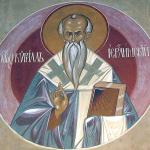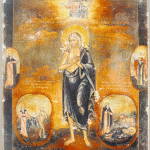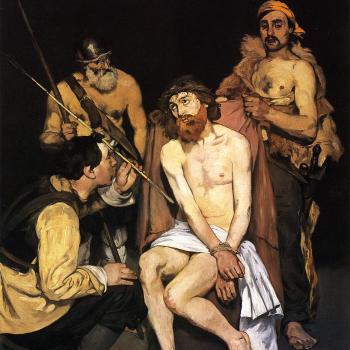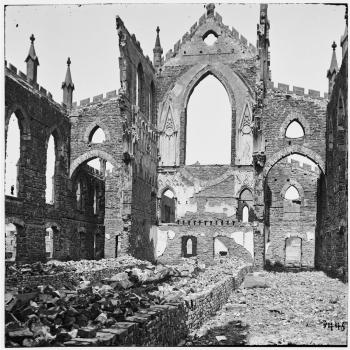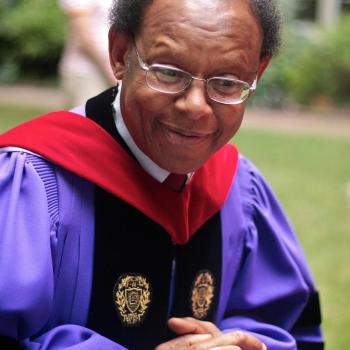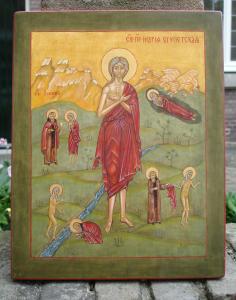
Sometimes, the toxicity found within the Christian community is too much for those affected by it, and if it is, they need to find a way to get away from it all. That is, they might have to put some distance between themselves and the Christian community (and the institutional church). This does not mean they have abandoned Christ, nor that they deny the value of the institutional church (let alone, the mystical body of Christ), but it means they feel they can only have an imperfect relationship with the institutional church so long as such toxicity exists. Often, such toxicity is found not only in the actual abuse people experience, be it sexual, physical, emotional, spiritual, or some combination therefore, but in the way the Christian community turns its backs on those who are abused, either by ignoring it, or worse, defending it with gaslighting. When that happens, those who suffer such abuse will not only do what they can to protect themselves, but also, will make their stand, making it clear what has happened and what changes need to occur. In this way, they show they have not abandoned the community, but rather, serve to protect it, more than those within it who let such evil continue to thrive. While they might find themselves no longer engaging normative liturgical functions, they are capable of receiving special graces and so not find themselves abandoned by Christ. St. Augustine recognized this, when he wrote:
Often, too, divine providence permits even good men to be driven from the congregation of Christ by the turbulent seditions of carnal men. When for the sake of the peace of the Church they patiently endure that insult or injury, and attempt no novelties in the way of heresy or schism, they will teach men how God is to be served with a true disposition and with great and sincere charity. The intention of such men is to return when the tumult has subsided. But if that is not permitted because the storm continues or because a fiercer one might be stirred up by their return, they hold fast to their purpose to look to the good even of those responsible for the tumults and commotions that drove them out. They form no separate conventicles of their own, but defend to the death and assist by their testimony the faith which they know is preached in the Catholic Church. These the Father who seeth in secret crowns secretly. It appears that this is a rare kind of Christian, but examples are not lacking. Indeed there are more than can be believed.[1]
Thus, if someone finds that they have to put a distance between themselves and the toxicity they find in the greater Christianity community, this does not mean they have abandoned Christianity, or Christ’s church. Rather, they stand out as a sign of the problems within that community. They have let people know the toxicity in the community and make it clear, it is unacceptable. Not only will it detract the institution church from its mission, to reach out and help those in need, sharing with them the fullness of the Gospel, it will have people leave until adequate reforms are made. They are doing more for the institutional church than those who shrug off such toxicity. They want the church to be what it is meant to be, that is, a vessel of God’s grace to the world. A great example of this can be found with what we know and understand of the life of St. Mary of Egypt.
It is said that St. Mary of Egypt, because she was a young woman living on her own, with no one giving her the funds she needed to survive, turned to prostitution, as many women throughout history have done. Eventually, she found herself joining with a group of pilgrims who were going to Jerusalem. On their way there, instead of any of the pilgrims seeing her in need and offering her help, some of them decided they would enjoy the opportunity they had and be with her, using her without any care or concern for her own good. Then, when they arrived at Jerusalem, they left her to be by herself, leaving her to feel the sharp pain and sorrow of being abandoned by everyone. The pilgrims went on their way, and to the Holy Sepulchre, without any care or concern for what they have done, while she felt the pain of it all, thinking she would be a hypocrite if she, like them, went into the holy church. Her conscience was better than theirs, and it was because it was, when she saw an icon of the Theotokos, she eventually was able to break down and feel sorrow for all she had done and suffered in her life and commit herself to a new way of life. She entered the church, upon which she went to confession and received communion.
Mary recognized the work of the priests, the ability to receive forgiveness from sacramental confession, and the value of communion, all of which she received once she entered the holy church. However, she experienced a great amount of toxicity and hypocrisy from the Christian community, which is why she could not stay. She knew the kinds of people who came to Jerusalem, all those pretending to be pious while engaging in all kinds of vices, with many women, like her, ending up being used and tossed aside by them. She decided the thing she should do is go out into the desert and live by herself like a hermit, focusing on her own self-improvement and relationship with God, and by doing so, reveal true holiness to the world instead of the sham holiness found in the Christian community in Jerusalem. She abandoned everything she had, but she still believed in the Christian faith and what God offered in and through the sacraments. Though she did not go back to the community and worship with them ever again, she joined in with the communion of the saints with her worship, and after years living like that, when she knew it was coming close to her departure from life, she was led to a priest who then was able to provide her communion, and then the next year, her burial.
Just as Mary continued to be a part of the body of Christ, even if she could not stand to be with the hypocritical Christian community which looked down upon her and abused her, so the same can be said concerning those abuse victims who have left the Christian community behind today. They continue to have a relationship with Christ, and through that relationship, to the mystical body of Christ, the church; it is an extraordinary situation, and not ideal, but it is what they need so long as the Christian community allows hypocrisy to rule in such a way that its toxicity not is ignored, not only remains, but actually grows worse. The ideal, to be sure, is for those who are toxic, those who abuse others, to be kept out of positions of power and authority, and kept away from the community as a whole, so that the church can be a community which works for the healing of its members. This is what its members must work for and promote, but as long as someone feels it is not the case, that they are not safe to be connected with the Christian community because they have suffered abuse by its members, abuse which has not sufficiently corrected, let alone recognized, it is understandable why they have to engage Christ in such an extraordinary fashion. While they should not be seen as denying the value of the church, of the sacraments, they do show how God is also not bound by the sacraments, and can and will meet people where they are at, where it is best to help them receive the healing they need, just as St. Mary of Egypt was able to do in the desert.
[1] St. Augustine, “Of True Religion,” in Augustine: Earlier Writings. trans. John H.S. Burleigh (Philadelphia: The Westminster Press, 1953), 231.
Stay in touch! Like A Little Bit of Nothing on Facebook.
If you liked what you read, please consider sharing it with your friends and family!
N.B.: While I read comments to moderate them, I rarely respond to them. If I don’t respond to your comment directly, don’t assume I am unthankful for it. I appreciate it. But I want readers to feel free to ask questions, and hopefully, dialogue with each other. I have shared what I wanted to say, though some responses will get a brief reply by me, or, if I find it interesting and something I can engage fully, as the foundation for another post. I have had many posts inspired or improved upon thanks to my readers.



